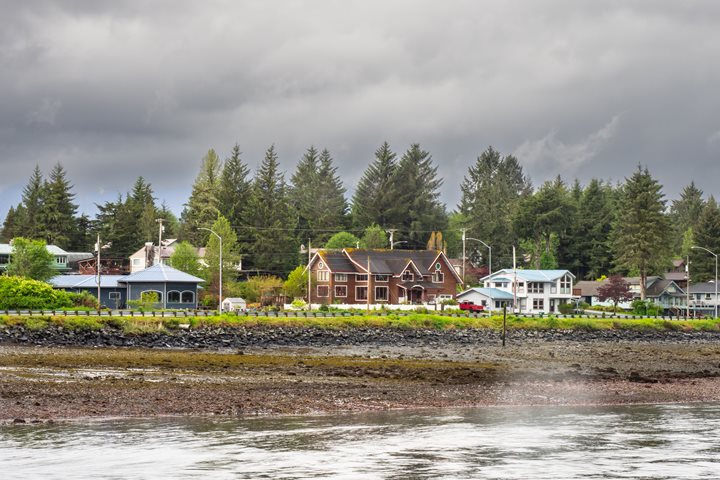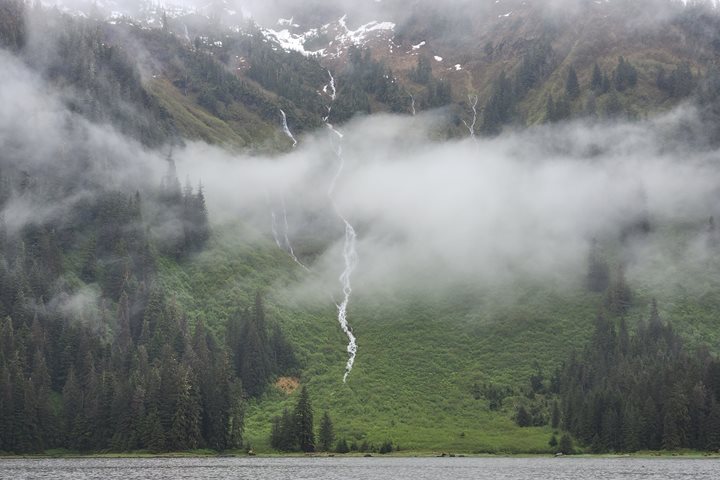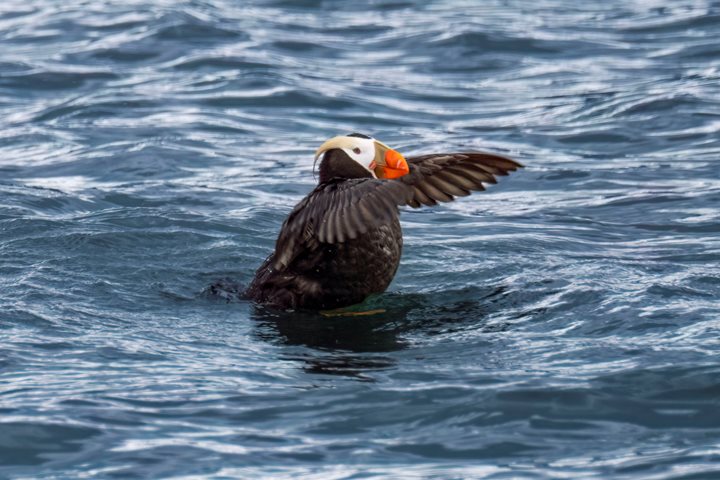A cold icy wind greeted the guests of the National Geographic Sea Bird this morning as we made our way into Johns Hopkins Inlet and past Jaw point in Glacier Bay National Park. The Johns Hopkins Inlet is closed for most of the season due to heavy pack ice and seals pupping their young—so it is a real privilege to be able to visit this area of the park. As the temperatures began to rise and the ship approached the face of the Johns Hopkins glacier, it became quickly apparent that the ice pack in the bay was too dense to navigate any closer and still allow time to visit other areas of the park, so the decision was made to reposition the ship to the beautiful Margerie and massive Grand Pacific Glaciers while the guests enjoyed a warm breakfast of crepes compote, fresh fruit, and all the bacon, eggs, and oatmeal a small army of cold photographers could eat.
Rays of sunlight began poking through the broken cloud cover by the time breakfast was finished and the excellent ship staff kept everyone on deck warm with rounds of hot chocolate as we watched the face of the Margerie Glacier waiting for her to calve. Masaki Mizushima—a Park Ranger and Faith Grant—a cultural interpreter—gave informative presentations on the history and importance of the park as the National Geographic Sea Bird began making her way south on the 65-mile trek towards the park’s entrance. Along our journey south we spotted a mountain goat and three bears near Gloomy Knob. Further south at South Marble Island we observed: Steller sea lions, a lone California sea lion, tufted puffins, pelagic cormorants, common murres, glaucous-winged gulls, and a peregrine falcon.
Our day could not be summed up any better than in the words of John Muir written over 130 years ago after his first visit to Alaska and Glacier Bay: ..."it seems as if surely we must at length reach the very paradise of the poets, the abode of the blessed."







